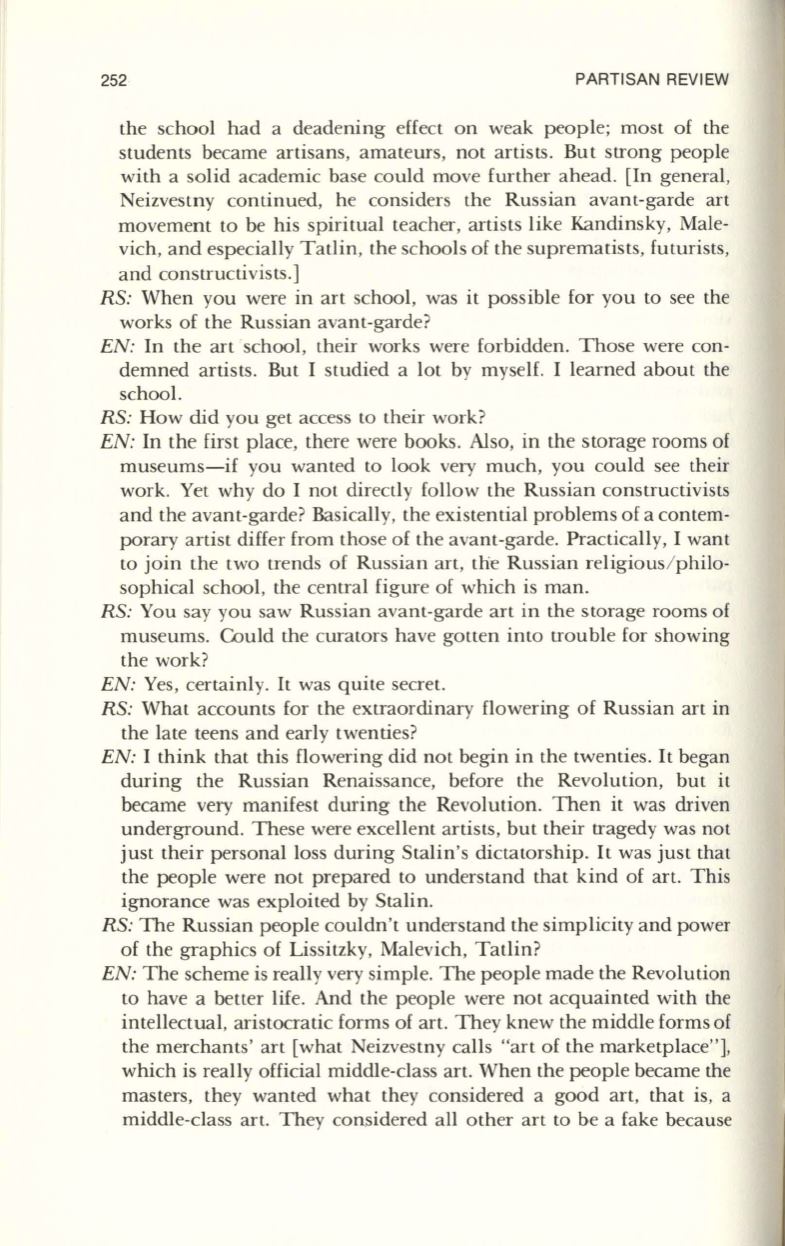
252
PARTISAN REVIEW
the school had a deadening effect on weak people; most of the
students became artisans, amateurs, not artists. But strong people
with a solid academic base could move further ahead. [In general,
Neizvestny continued, he considers the Russian avant-garde art
movement to be his spiritual teacher, artists like Kandinsky, Male–
vich, and especially Tatlin, the schools of the supremacists, futurists,
and constructivists.]
RS:
When you were in art school, was it possible for you to see the
works of the Russian avant-garde?
EN:
In the art school, their works were forbidden. Those were con–
demned artists. But I studied a lot by myself. I learned about the
school.
RS:
How did you get access
to
their work?
EN:
In the first place, there were books. Also, in the storage rooms of
museums-if you wanted
to
look very much, you could see their
work. Yet why do I not directly follow the Russian constructivists
and the avant-garde? Basically, the existential problems of a contem–
porary artist differ from those of the avant-garde. Practically, I want
to join the two trends of Russian art, the Russian religious/ philo–
sophical school, the central figure of which is man.
RS:
You say you saw Russian avant-garde art in the storage rooms of
museums. Could the curators have gotten into trouble for showing
the work?
EN:
Yes, certainly. It was quite secret.
RS:
What accounts for the extraordinary flowering of Russian art in
the late teens and early twenties?
EN:
I think that this flowering did not begin in the twenties.
It
began
during the Russian Renaissance, before the Revolution, but it
became very manifest during the Revolution. Then it was driven
underground. These were excellent artists, but their tragedy was not
just their personal loss during Stalin's dictatorship.
It
was just that
the people were not prepared to understand that kind of art. This
ignorance was exploited by Stalin.
RS:
The Russian people couldn't understand the simplicity and power
of the graphics of Lissitzky, Malevich, Tatlin?
EN:
The scheme is really very simple. The people made the Revolution
to have a better life. And the people were not acquainted with the
intellectual, aristocratic forms of art. They knew the middle forms of
the merchants' art [what Neizvestny calls "art of the marketplace" ],
which is really official middle-class art. When the people became the
masters, they wanted what they considered a good art, that is, a
middle-class art. They considered all other art
to
be a fake because


